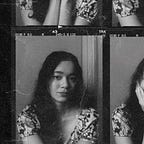Pickup
Delivery Platform · Human-Computer Interaction · 2020
Overview
As part of the Human-Computer Interaction subject of my diploma course, this assignment focuses on the design of a high fidelity multimedia prototype of a delivery service system. Hence, Pickup was created as a courier service mobile application for freelance and home-based sellers and delivery riders. I was the main designer working on this project in our fourth semester, 2020 with a team of four other members
Hypothesis
Freelancers and home-based sellers without a physical store want a platform to carry out deliveries to their customers in a organised manner.
The Problem
“How might freelance and home-based sellers effortlessly take deliveries and keep track of delivery requests from customers?”
Anyone can be an entrepreneur. Yet, the difficulty of delivering products, especially foods, would have to be delivered personally which in turn, decreases efficiency and eventually sales of the business. Thus, Pickup’s intent is to act as a platform for home-based sellers to not only assist in reaching out to their customers with ease but to also expand a larger base of consumers and drive sales.
Research
Understanding the target users
Before research can begin, it’s crucial to identify the targeted users of this app and sort them into groups. In this case, users can be divided into two distinct groups which are sellers and drivers.
- Sellers
The sellers are the users that would be using the app for delivery purposes. They should be registered users for verification purposes, furnish details of a product they would like to be delivered and be able to track current, past and future delivery orders. - Drivers
Also known as riders, they are the users that would be using the app for taking requests and navigation purposes. Not only is it vital for drivers to be able to view and take delivery requests from users, they would be using the app for route navigation between pick up and drop off location points.
Issue Identification
In order to identify the functions, features and layout of the application, we carried out a brief analysis on similar local applications that reside within the courier service industry. These apps include Honestbee, Bungkusit, Lalamove and MrSpeedy.
Main Findings
- Slow and laggy app performance
- Difficult UI that prevented or delayed registration completion
And with that, our team assembled one main goal to help guide our design process: reduce time-spent on tasks and errors.
Outcomes
We wanted Pickup to have a clean, friendly and casual look. Thus, it was important for us to instill that portrayal in the design. First, we came up with the name Pickup not only because it essentially makes it clear that it is a delivery app but from the way it’s spelled and arranged, it gives it more of a casual feel to it and that equals to friendliness.
Second, we have Pickup it’s own design system and principles that fully aligns with how we wanted the app to feel like to it’s users: friendly, reliable and human.
User’s Dashboard
We wanted the dashboard to present the upmost important functions and features that each user might need. Users who are drivers would be able to view a summary of deliveries they have made each day. While users who are sellers would be able to view a summary of the deliveries they have made each month.
Card Details
Both driver and seller users are able to view their added credit cards and add a new card by either filling in necessary information or scanning the credit card through the user’s camera.
Seller’s Section
Sellers are able to view their past and pending orders. Order details such as the date, type of package, route and price is displayed. Sellers are also able to search through their orders
Profile
Sellers are able to view their respective profiles. Their profile picture and name are displayed. Their phone number and email are displayed as well. The seller’s current vehicle name and number plate are displayed. Sellers are able to edit profile and mentioned components.
Order Process
Sellers must first pick the two points of location and pick a type of vehicle. When choosing the type of vehicle, the drivers nearby will be displayed on the map. Next, seller must fill up all necessary details of the package and pick a type of card.
Driver’s Section
Earnings
Drivers are able to view and keep track of their total earnings for each day of the week. The app calculates the total earnings for the whole week. Drivers are able to view past weeks as well.
Additionally, drivers are able to send out invitations using the invites link to earn rewards. Drivers are also able to view their trip history as well.
Profile
Drivers are able to view their respective profiles. Their profile picture and name are displayed. The amount of trips they have made, the amount of time they have been a member and the amount of stars received are displayed. The driver’s current vehicle name and number plate are displayed. Drivers are able to edit profile and mentioned components.
Delivery Process
Drivers are able to view all requests nearby the driver’s current location once they are online. Once a request is taken, driver will begin their trip. Firstly, they would have to pick a route before starting the journey. During the journey, driver will be able to chat or call the user to communicate with them.
